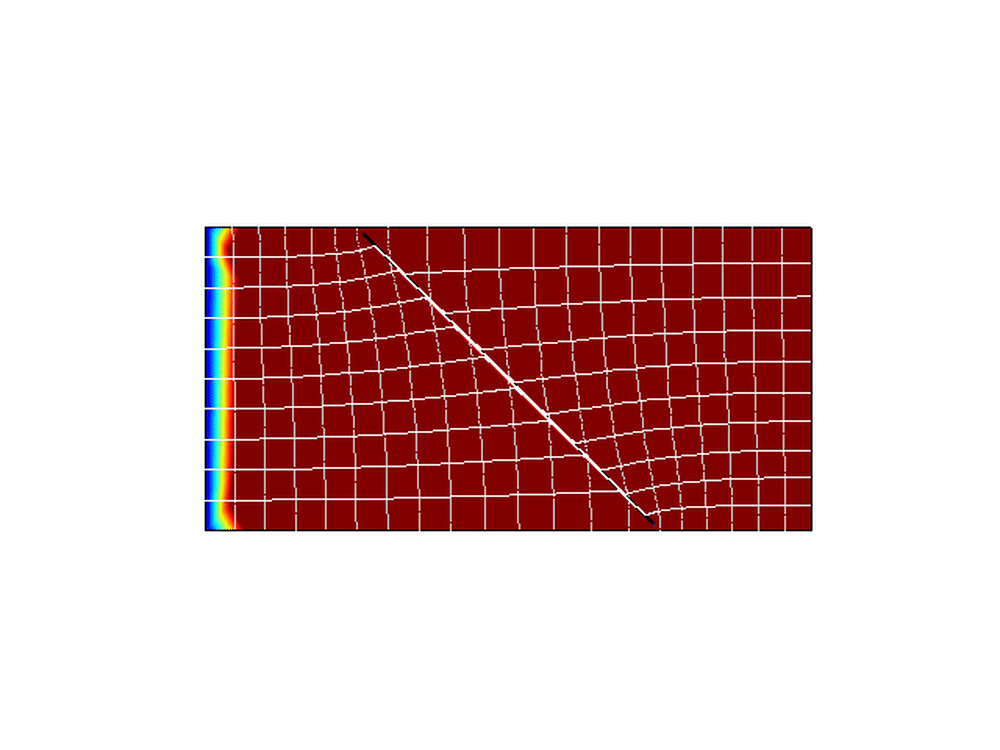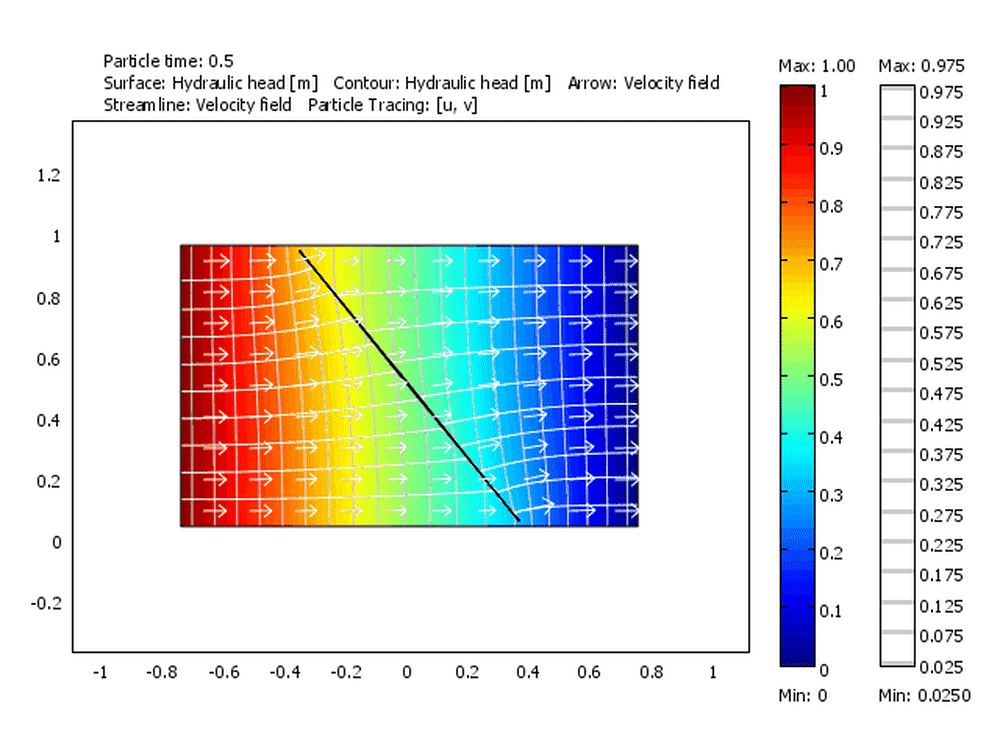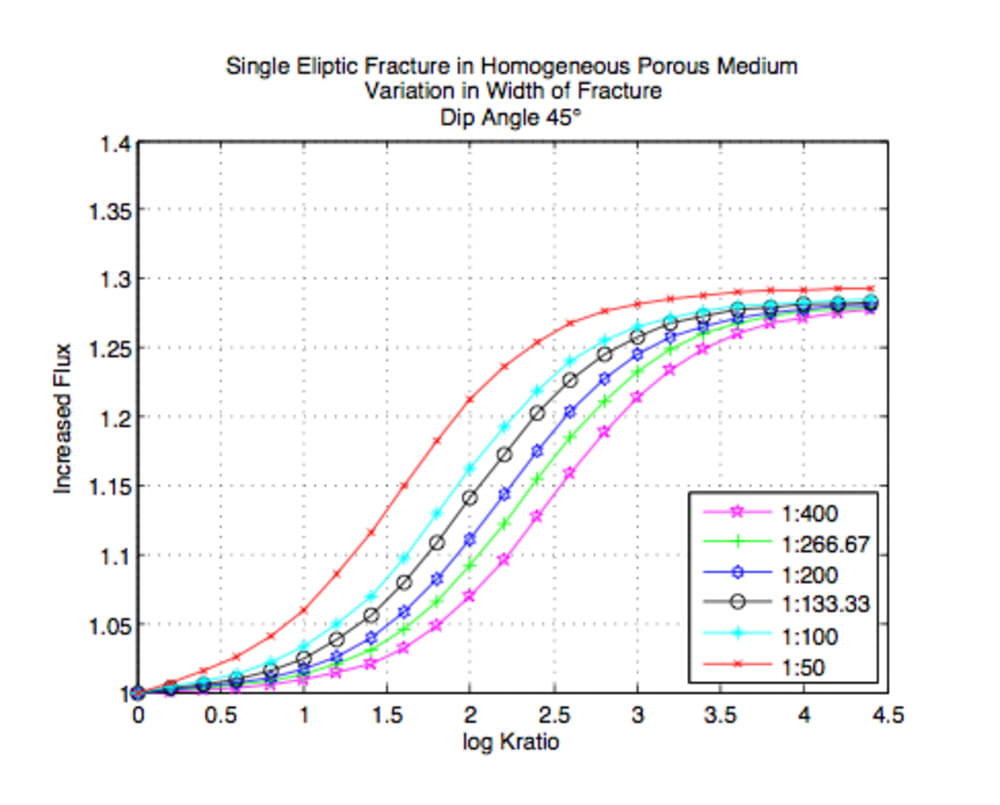In most geothermal reservoirs, i.e. North German Basin, fluid flow is mainly controlled by the permeability of fracture network. Permeability of an individual fracture is proportional to the cube of its aperture, and fractures that form their own pathways are mostly vertical. In this study, dip-slip fault, to be more specific, shear fracture with a rotation angle less than 90° is applied. The fracture is not fully opened yet filled with fluid and possesses high permeability, therein behaves like equivalent porous media. Darcy’s Law is applied to porous media and the fracture. Cubic Law is applied to the fracture.
In this study, an idealized geothermic scenario is simulated with a 2D fundamental numerical model, which is developed using COMSOL Multiphysics, with a no flow upper boundary and lower boundary, hydraulic head gradient decreases from the left boundary to the right boundary. A fracture with high permeability is integrated into the centre of the numerical model, and its surronding porous media possesses low permeability. This fluid transporting fracture is modeled as a single elliptic and vertical to begin with, effects of changing the rotation angle, half axes and geometry of the fracture, lithology of porous media and normalized hydraulic conductivity, on volumetric flux in porous media and volumetric flux through the fracture are studied. Finite Element Method (FEM) is applied, mesh size of the 2D fundamental numerical model is auto-refined and grows outward from the fracture to the porous media. Earth Science Module of COMSOL Multiphysics is applied. Particle tracing and heat transfer in porous media is studied in short. Heat Transfer Module which models heat transfer by conduction, convection and radiation, is applied. Darcy’s Law is applied for the purpose of particle tracing, and Convection-Dissufion Equation is applied for the purpose of heat transfer. Four idealized geothermic scenarios are simulated. Fluid flow properties are constants throughout the study, rock physical properties vary in terms of homogeneity and heterogeneity which determines its porosity and permeability, fracture physical properties vary in terms of rotation angle, ratio of half axes, geometry and porosity. Normalized hydraulic conductivities are used. Paticle tracing and heat transfer are studied based on the same scenarios.
This study shows that volumetric flux in always higher in fractured porous media than that in non-fractured porous media. Volumetric flux of fluid in fractured porous media depends significantly on rock physical properties and fracture physical properties, whereas volumetric flux of fluid through fractures depends significantly on fracture physical properties. Despite FEM in COMSOL Multiphysics, mesh size of fractures and porous media has no significant effect on volumetric flux. Integrated stabalization technique can be used for better postprocesses.
This study is an approach towards geothermal reservoirs in North German Basin. A series of fluid flow simulations is presented for a wide range of normalized hydraulic conductivity for porous media and fractures, under a wide range of rock and fracture physical properties. Such flow in idealized geothermic scenarios have important implications for geothermal power generation, naturally or artificially, in reality.
Like this entry?
-
About the Entrant
- Name:Liwah Wong
- Type of entry:individual
- Software used for this entry:COMSOL Multiphysics
- Patent status:patented








